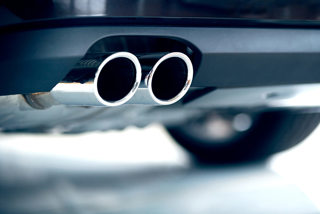The Government is consulting on how it will adopt EU emissions targets for cars, vans and HGVs in January 2021, when the transition period for the UK’s departure from the EU is complete.
While all EU law will be converted into UK legislation at the end of the transition period on 31 December 2020, there are certain ‘inoperabilities’ in the way the legislation might function in a UK only context.
Currently, the European Commission sets an EU fleet average target that must be met by the EU fleet. For cars, this target is currently 95g CO2/km in 2020. For vans, the target is 147g CO2/km in 2020.
These targets will be converted into WLTP CO2 emissions targets in 2021 following the change in the vehicle CO2 test procedure, and the 2021 actual emissions will represent the new baseline.
Manufacturers will then have to meet a 15% reduction for cars and vans by 2025, and a 37.5% reduction for cars and a 31% reduction for vans by 2030, both against this 2021 baseline.
From these, manufacturers receive individual targets that are set according to the mass of their fleet. Manufacturers with heavier fleets receive individual targets above the EU target; manufacturers with lighter fleets receive targets below the EU target.
Manufacturers will be fined for missing their targets. The fine amount in the UK will be £86 for each g/km above the target multiplied by the number of vehicles registered in the year.
Manufacturers currently balance the CO2 emissions of new vehicles sold across the 28 individual EU markets to deliver compliance. They often offset sales of higher emitting vehicles in one market against sales of lower emitting vehicles in another.
Post-transition period, manufacturers will not be able to meet UK targets using sales in the EU27.
The overall mass-based emissions target continues to work in a UK-only context, and thus will be retained after the transition period. The UK fleet is heavier than the EU27’s and therefore moving from the EU fleet average to a UK specific value would immediately make regulatory targets more demanding for all manufacturers.
In order to maintain the level of effort required to meet targets from January 1, 2021 in the UK, the government intends to maintain the EU formulae ‘as-is’. Rather than comparing the manufacturer’s fleet against the average mass of relevant UK vehicles, the fleet will continue to be compared against the average mass of relevant EU vehicles.
Due to the UK having a higher average vehicle mass than the EU, this means that the combined sum of UK targets will be slightly higher than in the EU27.
Sales volumes and derogation thresholds
Derogations protect the competitiveness of smaller vehicle manufacturers, which lack the resources to invest in the development of new technologies that the mass manufacturers do, by setting them relative rather than absolute emissions targets.
The EU threshold values are set on the basis of EU market sales, rather than those in the UK (which represents between 15%-20% of the EU market).
The Government is proposing derogation thresholds based on the historical share of manufacturers’ EU sales that have occurred in the UK. It says this will ensure that manufacturers qualify for the same type of derogation in the UK that they would have through the EU regulation.
Eco-Innovations
Under the EU regulations, manufacturers can apply for credits against their CO2 targets for technologies on their vehicles that reduce emissions but are not ‘seen’ during the regulatory type approval test. To gain credit, manufacturers must demonstrate the emissions saving, have it independently verified and apply to the European Commission who adjudicate.
The Government proposes to automatically recognise all existing EU ‘eco-innovation’ approvals in the UK legislation, and will also mirror the approvals system domestically to avoid forcing manufacturers to test their ‘eco-innovations’ in the EU27.
Heavy Good Vehicles
The regulation sets targets to reduce the average CO2 emissions from new HGV vehicles by 15% in 2025 and by 30% in 2030, measured against a baseline determined from data reported to the European Commission.
The consultation seeks input about its proposed changes to the reporting requirements of CO2 emissions data from HGV manufacturers.
Following the UK’s exit from the EU on January 31, 2020, and entering into the transition period to December 31, 2020, all of the manufacturer’s data for the baseline reporting period January 1, 2019 to June 30, 2020 must now be submitted to the European Commission by September 30, 2020.
Given the reporting date is now September 2020, each of the vehicle sub-categories baseline measurements will therefore be calculated and set by the European Commission and published in April 2021. This published data will include the UK reported data. The Government proposes to adopt the baselines published by the commission in April 2021 against which the 2025 and 2030 CO2 emission reductions targets will then be measured going forward under the resulting UK only regime.
Manufacturers are required to report the required data to the European Commission from July 1 to June 30 each year commencing from 1 July 2020. As the transition period ends on December 31, 2020 the first of these reporting periods is therefore divided in two. To resolve this inoperability there are three options:
1) shorten the first UK reporting year to instead cover January 1, to June 2021 data – this would effectively delay the introduction of the Regulation’s requirements from 1 July 2020 by six months in the UK and mean manufacturers’ performance would be measured against only six months data
2) Extend the first reporting period to cover the period from January 1, 2021 to June 30, 2022 – again this would delay the first reporting period in the UK by six months and provide for an unrepresentative 18-month reporting period
3) Retain the provisions as they stand but include an additional reporting provision to require reporting of data for the full reporting period July 1, 2020 to June 30, 2021 by HGV manufacturers to the Secretary of State.




















Login to comment
Comments
No comments have been made yet.